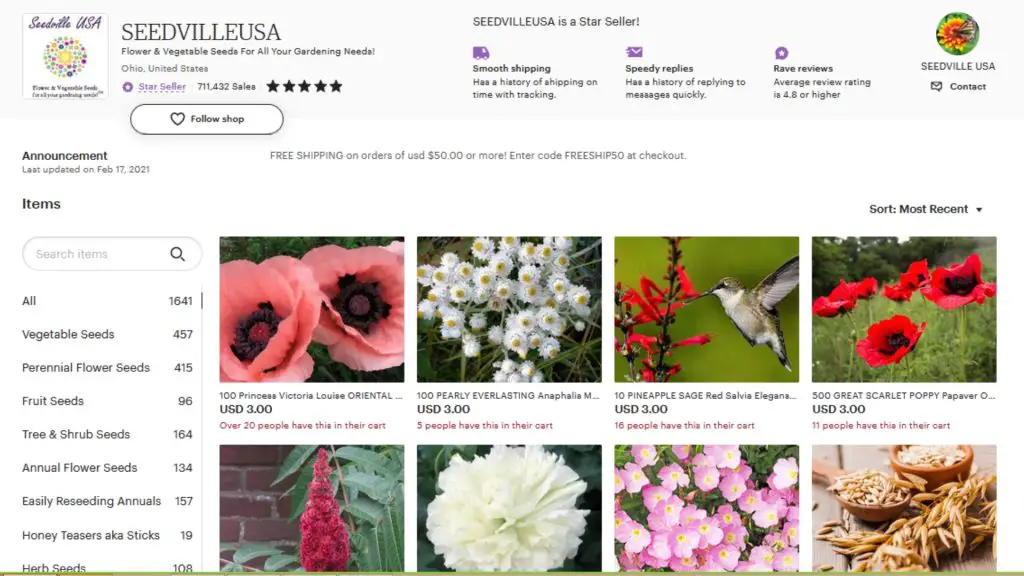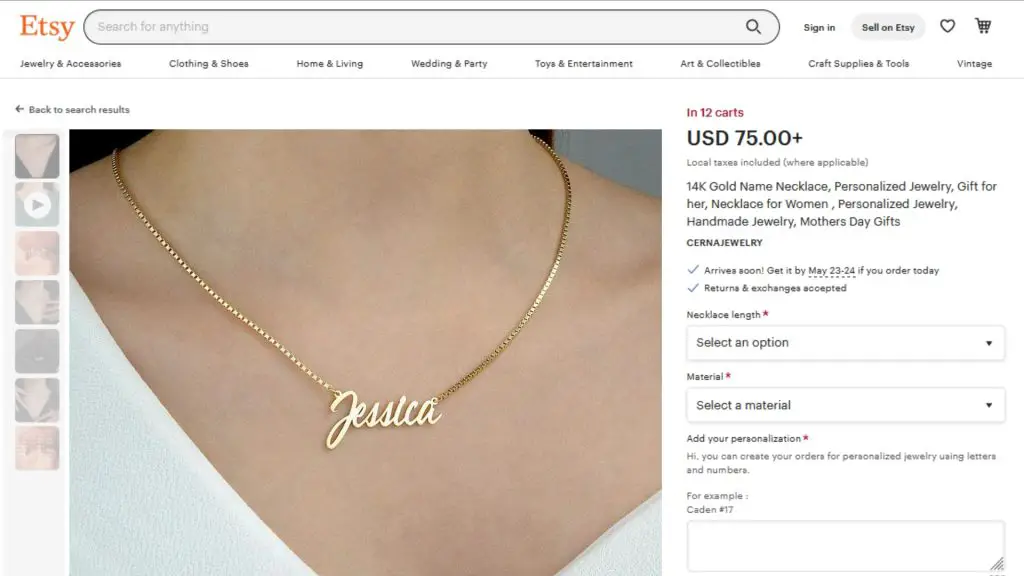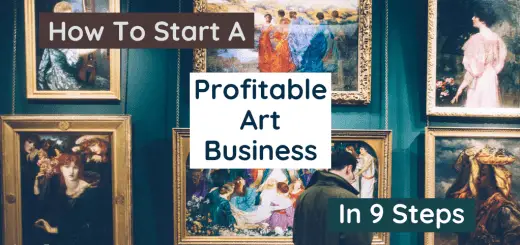18 Proven Etsy SEO Tips to Improve Etsy Ranking
It is a challenge for Etsy sellers like you to get a product on top of Etsy’s search results. There are several reasons for that. Mainly, the competition on Etsy is extreme with many sellers offering similar products as you offer. Also, Etsy’s search algorithm is pretty much complex and considers multiple factors when determining rankings, as explained below.
What is Etsy SEO?
All search engines and social media platforms have algorithms to process when a user types something to search. Etsy has its own algorithm too. It is simply how Etsy attempts to put relevant listings in front when a shopper searches for something.
Etsy SEO means the process of optimizing your listings so that they will perform better in Etsy’s search ranking algorithm. Upon a successful SEO, you will get your listings on top of the buyer search results to make more sales.
SEO is tricky since search engines continually adjust their criteria for ranking. So you need to continuously improve on this.
You have to keep in mind that Etsy looks at the overall performance of your listings, not just only your keywords. This means you can not solely target keywords with high search and engagement, but you should also consider providing a quality product that people are eager to buy and will react to positively.
Main Factors Etsy Considering for Ranking
Etsy uses a two-step method to rank product listings. Those are Query Matching and Ranking.
1) Query Matching
When a customer searches for a product on Etsy, its algorithm uses the product listing information, mainly the title, tag, category, attribute, and description to expose what products should be shown in the search results.
That means Etsy cross-checks the search query with the above product information to determine which products should be listed in the results. This is the primary step of ranking and is known as query matching.
2) Ranking
When a shopper searches for something, there are many products which are matching with the search query. But there is a separate process done by Etsy to determine what products are listed first to last, basically the order of the listing. This is known as the Ranking.
i) Relevance
Item titles, tags, and categories, that are an exact match with what shopper search will appear highest in search results.
As an example, if a shopper searches for “wood watch” the search algorithm will consider the listings which have “wood watch” in the title as the closest match. Thenafter it will return all listings with the words “wood” or “watch” in the tags or title as the next closest match. Words at the beginning of titles are considered more important than words at the end.
ii) Recency Score
Etsy search algorithm provides new listings a boost in search rankings to understand how shoppers react to these listings. Etsy uses this method to determine the quality score of newly listed products. You may see a rise in search volume from a few hours to many days after listing.
iii) Personalized Search Score
Etsy uses a special mechanism to adapt its search results to the customer’s interest. Your products may appear higher in some customers’ search results than others, even though all used the same search query. Practically many shoppers notice a rise and improvement in their rankings as they experiment with different strategies due to this.
iv) Shop Quality Score
Etsy calculates the shop quality score considering factors like the number of positive/negative customer reviews, number of sales, number of shop visits, whether any cases opened for your shop, completion of the “About” section & shop policies section.
v) Shop Location
Etsy provides a priority in the results to the local items in the EU, Australia, and Canada. Etsy will not consider location as a special consideration when searching from other countries.
vi) Listing Quality Score
Etsy calculates listing quality score using various factors like product sales/converts, number of buyers clicking the product, favoriting trends, number of sales, and positive/negative feedback given for the product. Your listing quality score improves if customers are interested in your product, buy the product, add those to the card, add them as favorites, and stay in your store for a long time.
It requires a strategic approach with having a certain good knowledge to increase visibility and stand out among the other sellers. Below are some proven SEO tips for you to improve your Etsy search ranking.
1. Use a Highly Relevant Shop Name
It is far better if your shop title represents what you sell in your shop. Your customers see your shop name and they will know at a glance what you sell. This is a good aspect to improve your SEO. Having a memorable and relevant shop title will bring you the best advantage and also it will help your products listed more.
For example, the Etsy shop SEED VILLE USA is a Flower & Vegetable Seeds Seller. When you see the shop name at a glance you know that this shop will sell seeds. That is pretty much an awesome tactic to attract your target audience and also improve your SEO!

2. Do the Title Optimization Using the Below Methods
The keywords in the title determine where the product get appears in the search results and how it is shown to your customer. Descriptive and anchor keyword methods are two proven ways to optimize keywords in your product titles to increase visibility in search results, as explained below,

Step 01 – Get the Keywords by Descriptive Method
These are the keywords that describe the item. Some examples of this related to the same Personalized Name Necklace are Ladies, Lady, Jewellery, Necklace, Gold, Ladies Accessories, and Fashion.
Step 02 – Get the Keywords by Anchor Method
These are the keywords related to what the item is. Let’s simplify this by using the example below of a personalized name necklace. Some anchor keywords for this will be “Name Necklace”, “Gold Necklace”, “Minimalist Necklace”, “Personalized Name Necklace”, and “Custom Name Necklace”.
Then after you can create your title using descriptive and anchor keywords combined as per the following example,
Title: Ladies Custom Name Necklace, Gold Personalized Necklace, Lady Jewellery, Minimalist Gold Necklace…
You have to think like a customer to identify the ideal keywords. What would your customer type in the search bar to find your product or service? What would be the search phrases they are most likely to use? You have to think from the below-given perspective and answer these questions by yourself to get the keywords more accurately,
- Style – Think as a customer about what styles they will have in mind when searching for your products. An example: customized, minimalist, wooden, gold, silver, modern, etc.
- Occasion – Think as a customer on what occasion your customers will use your products. As an example: valentines, anniversary, birthday, bachelors party, etc.
- Solution – Think as a customer whether your product offers any solution for them. whether it helps to keep things organized, clear the dirt, or improve the aesthetics.
- Who – Think of a customer who will be using your item. whether a wife or husband or men or women or?
- What – What are they doing with the item? whether they are using this for household cleaning or any other purpose.
- Where – Where are they using the item? They could use this item to wear it to a special occasion. or casual wear?
- When – When are they using the item? This item could be used when there is dirt in the wall to hide it. or any other reason?
- Why – Why are they using the item? to improve the look of the house, for beauty reasons? or any other?
Make sure your titles are descriptive, accurate, and compelling, while still being concise. Also, make sure to utilize the entire product title space for the listings.
3. Get Tag Keywords using Short-tail, Long-tail, Descriptive, Anchor, and Other Methods
You can use the Descriptive and Anchor keyword methods to get the best tags that you need to use for your listing (as similar as you optimize your title). Also, use short-tail (board) keywords and long-tail (specific) keywords as explained below,
- Short-tail (board) keywords are the general search terms that typically contain 1-3 words and cover a broad topic. These keywords have higher search volume and also higher competition.
- Long-tail (specific) keywords are longer and more specific keyword phrases that visitors are more likely to use when they need the product specifically. Most long-tail keywords have lower search volume than short-tail ones. These long-tail keywords have less search volume, but most importantly less competition.
As an example, for the below necklace, the following will be some examples of long-tail and short-tail keywords,
- Long-tail keywords – 14K gold name necklace for women, personalized jewelry including name, handmade necklace including the customized name.
- Short-tail keywords – gold necklace, personalized necklace, 14k gold necklace.
Use a combination of short-tail (board) tags and long-tail (specific) tags to cover a wide range of search terms that potential buyers might use.
Also, use the Etsy auto-suggest feature to get the keywords. As an example type “necklace a” to get all the keywords starting from a. Then “necklace b”, and “necklace c” likewise until z to identify all the related keywords.

You can use up to 13 tags. It is strongly recommended to use 13 tags as your product can rank in keywords much as possible to improve SEO.
- Be aware not to include plurals because Etsy algorithms will consider the root words in the search query.
- Be careful of spelling in your tags since if a customer search query is misspelled, Etsy redirects to the correct word.
- You don’t need to add tags in multiple languages. You can only use the keywords matching the store language. Etsy will do the relevant translations automatically.
- Do not repeat the keywords. There will be no positive gain from repeating the same keyword.
- Avoid using the same keywords for many products. The Etsy search algorithm will only show one or two listings from a single seller, even if that seller has 20+ items with the same keywords. Etsy uses a de-clumping technique to ensure that a diverse range of stores appears in the search results, not just the products of some sellers dominating the results page.
4. Use Detailed Descriptions
It is better from the SEO and customer satisfaction perspective to write detailed and informative product descriptions that include the relevant keywords naturally. It is recommended to provide specific details about your product, its features, materials used, and any customization options available. Don’t forget to highlight the benefits and unique selling points in the description, those will be plus points.
5. Add High-Quality Photos
It is a must to capture high-quality, visually appealing product images that accurately represent the items you have listed. You need to optimize your images by compressing them for faster loading times.
6. Use Relevant Keywords in Image Alt Text
You need to include the relevant keywords in the image file names and alt text. This is because your product images will be shown in the search engine image search results as well. The search engines (like Google) will consider the image alt text and file name to determine the relevancy of your images in the search results.
7. Make Sure to Monitor and Adjust Your Listings
You need to make a habit of regularly monitoring your shop performance using Etsy analytics and adjusting your SEO strategies accordingly.
Recency is a factor used in the Etsy search algorithm. This is where when you create a new listing, it receives a temporary boost to see whether customers like it. Etsy uses this information to evaluate the listing quality score.
You need to continuously monitor your listings and identify the low-performing ones. You need to analyze which keywords and listings are performing well and make data-driven optimizations to other low-performing listings similar to the top performers.
But make sure the same keywords are not used for multiple listings but focus on the method/strategy that worked well for the top performers and use the same for low performers.
8. Fill Shop Policies and About Section
You need to make sure to complete the shop policies, including shipping, returns, and payment details. Fill out the “About” section of your shop to provide more information about your brand, storyline, and what makes your products unique in the market. This will improve your shop quality score calculated by Etsy, which indirectly has a positive impact on SEO.
9. Promote Your Listings
External traffic through external promotions like social media campaigns, influencer marketing, and collaboration is a great way to signal Etsy that Customers are visiting your shop frequently, to improve the SEO. The improved external traffic can positively impact your Etsy ranking.
10. Encourage Customer Reviews
You need to encourage your customers to leave reviews after purchasing your products. Positive reviews will improve your shop quality score calculated by Etsy and will impact your overall search ranking. It is also useful to build trust and credibility with your customers.
11. Maintain Competitive Pricing
Setting up competitive pricing is a great way to stand out from other similar products. This could be a loss for you in the short term. But the improved sales and positive reviews will boost the overall search rankings of your products listed. Balancing affordability with profitability can attract more buyers.
12. Consider to Offer Free Shipping
Most buyers like to buy products that offer free shipping. Some buyers are searching for products by ticking the “FREE Shipping” filter to view only the products with free shipping. There is a competitive advantage of getting your products higher in ranking if you consider free shipping.
13. Participate in Etsy Seller Groups
It is an advantage for you if you join Etsy groups and teams related to your niche or industry. You need to engage with fellow sellers, share tips, and consider collaborations to enhance your shop’s visibility. This is a great way to get win-win benefits.
14. Stay Active on Etsy
You need to regularly update your listings and add new products to your shop. Etsy usually favors sellers who are active and reward them with improved visibility.
15. Check Whether Shop & Listings are Optimized for Mobile
You need to check and ensure that your shop and listings are mobile-friendly. Since everyone is using mobile phones, rather than Laptops or Desktops these days, there are many purchases done purely through mobile devices. Mobile responsiveness of your shop and products can improve conversion rates, which indirectly impacts your SEO.
16. Offer Special Deals or Promotions
Special deals, limited-time offers, and promotions will attract more sales. Promote these deals through your shop and also in external social media channels. More sales will result in more positive feedback, and more positive feedback will improve your shop’s visibility and SEO.
17. Provide Excellent Customer Service
Offer exceptional customer service to encourage positive reviews and repeat purchases. You need to make sure to respond promptly to inquiries, address concerns, and go the extra mile to delight your customers. Always keep positive and polite communication with your customers.
18. Keep Learning and Evolving
Etsy is a continuously evolving platform. You need to stay updated with Etsy’s guidelines, and their published SEO best practices, monitor the top-selling shops in your same niche, and also be aware of the industry trends. Continuously learn and adapt your strategies to maintain a competitive edge as a classy Etsy seller.
Remember, improving your Etsy ranking is an ongoing process. It takes time and continuous effort to optimize your shop, listings, and SEO strategies. Stay consistent, adapt to changes in Etsy’s algorithms, and always strive to provide excellent products and customer experiences.


